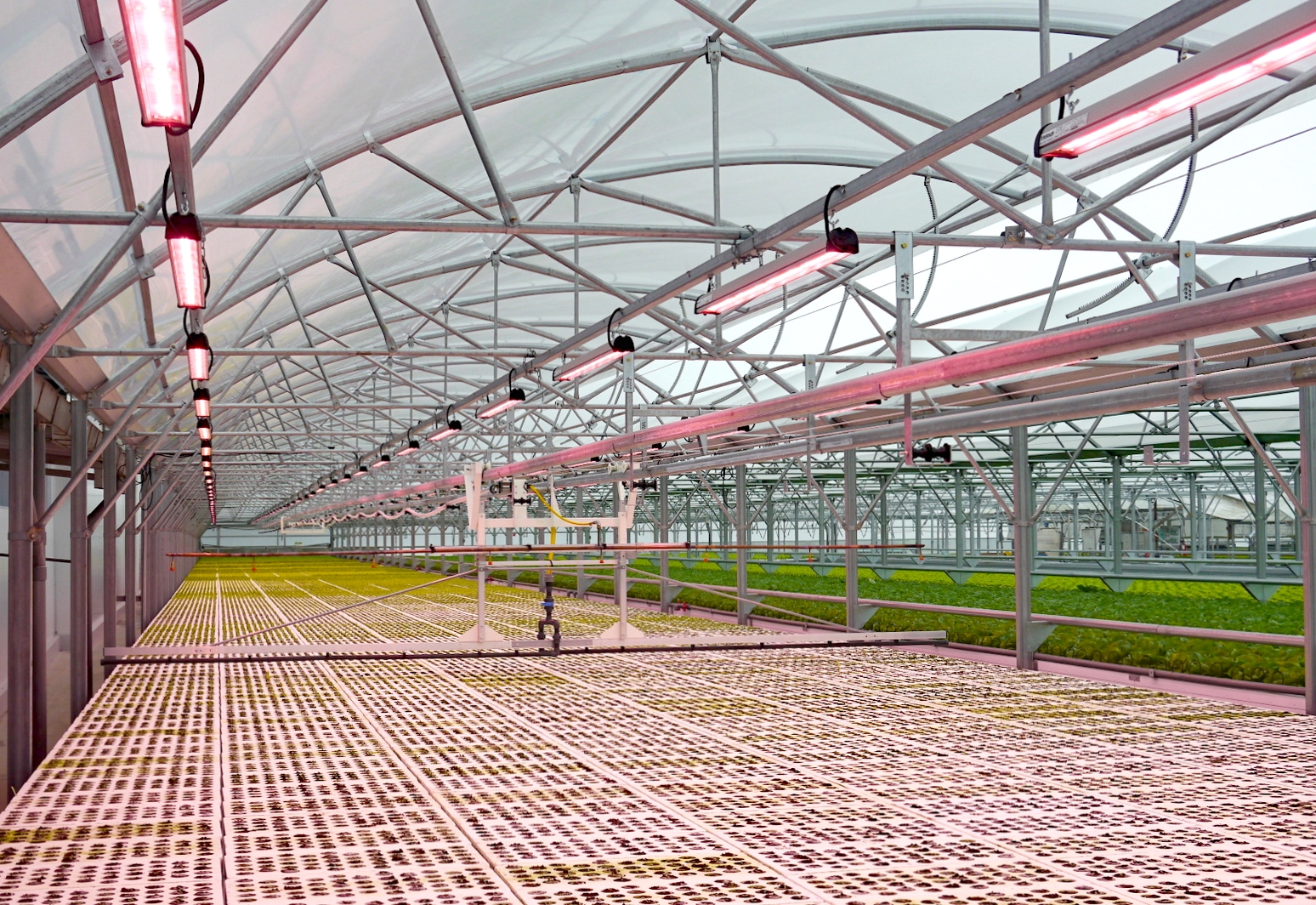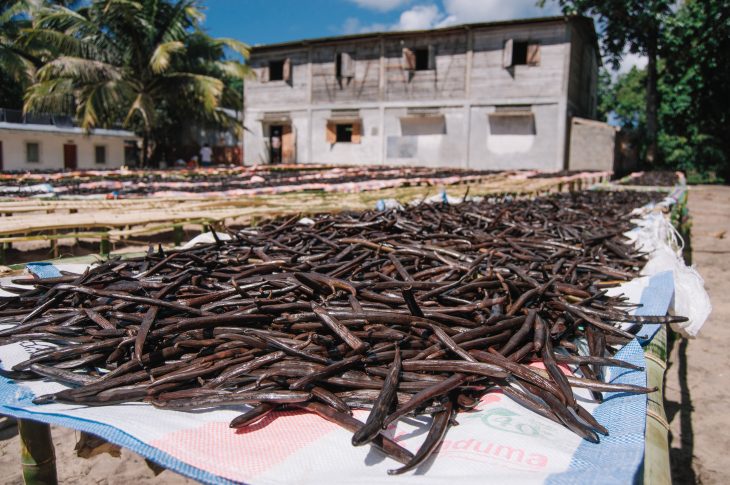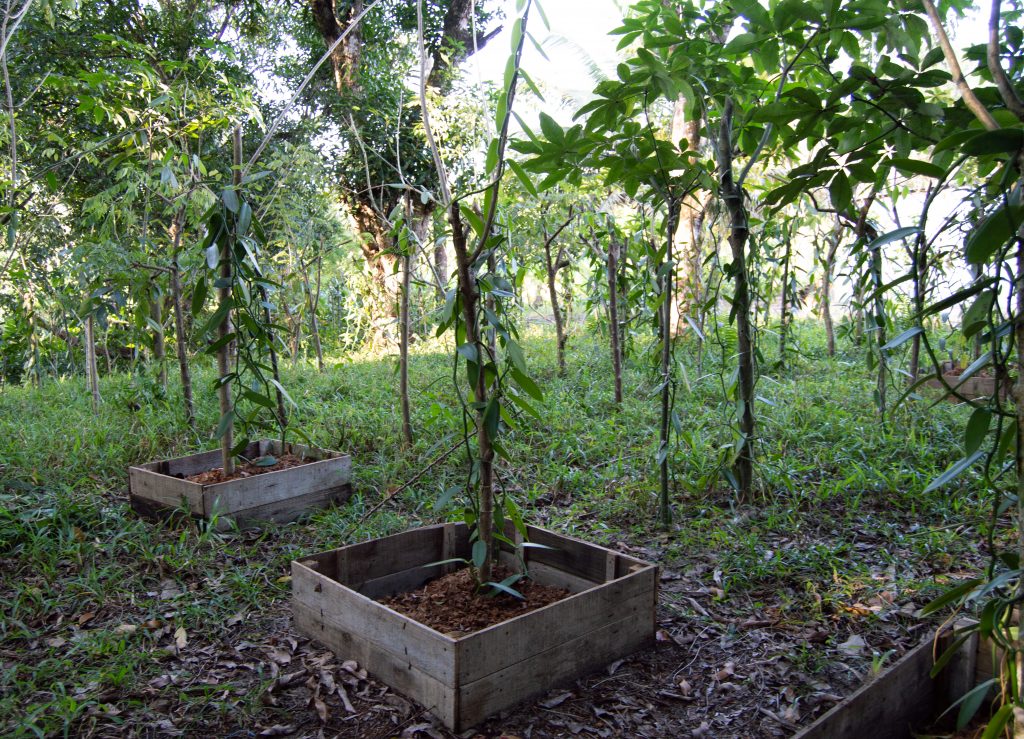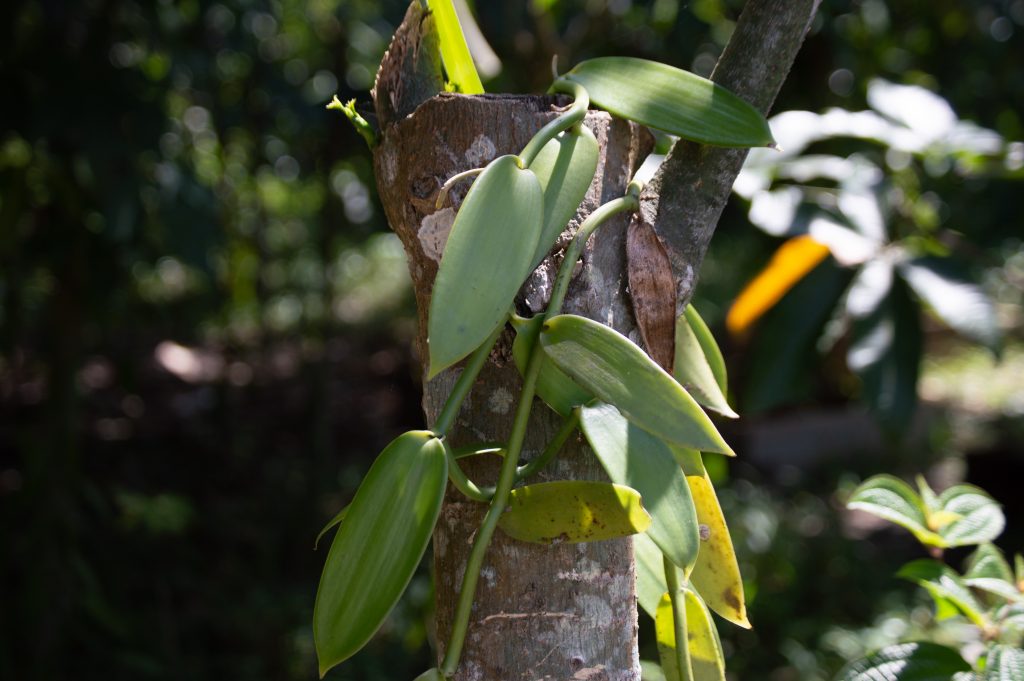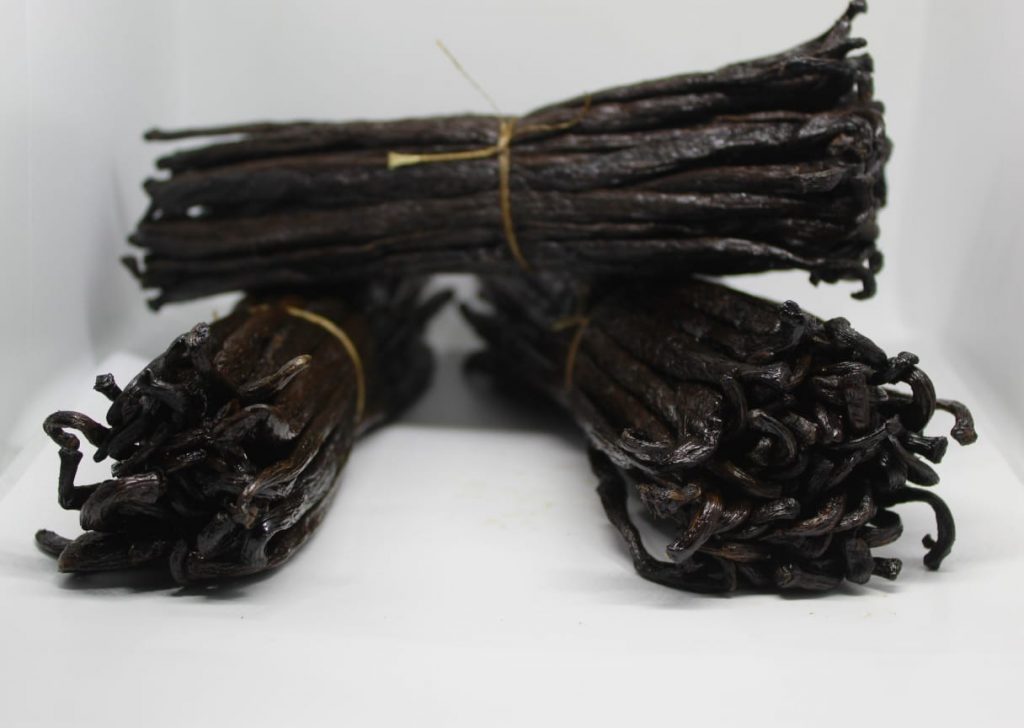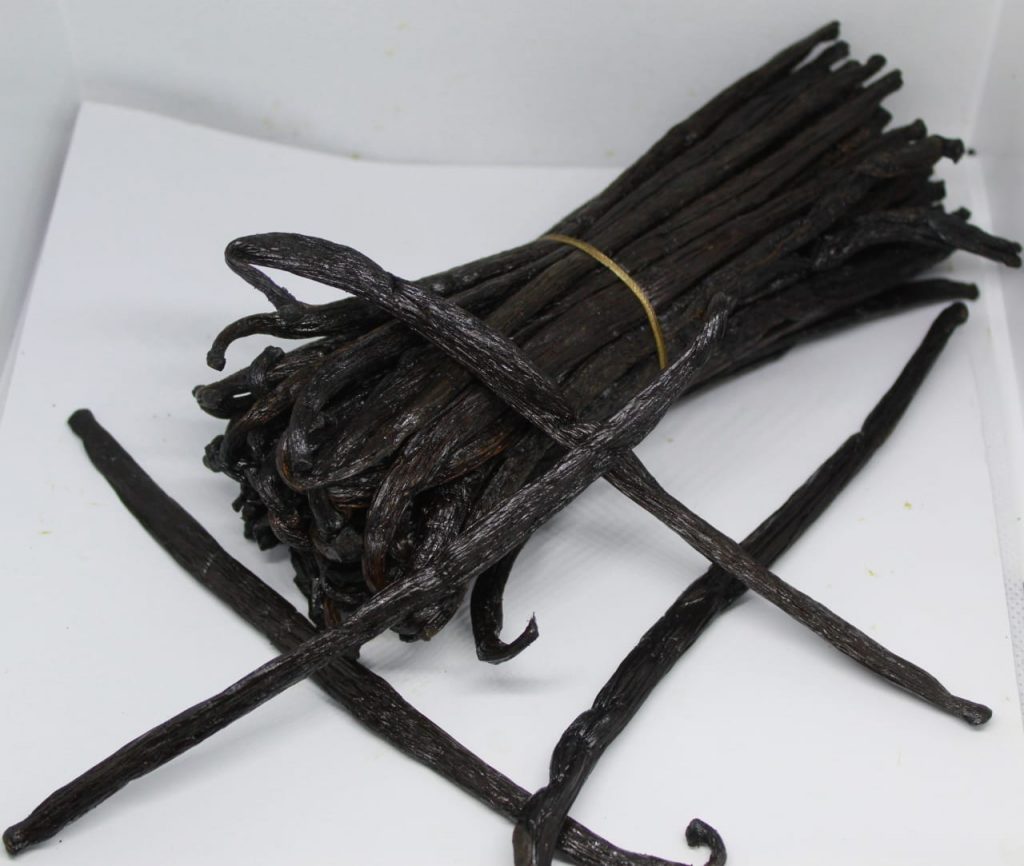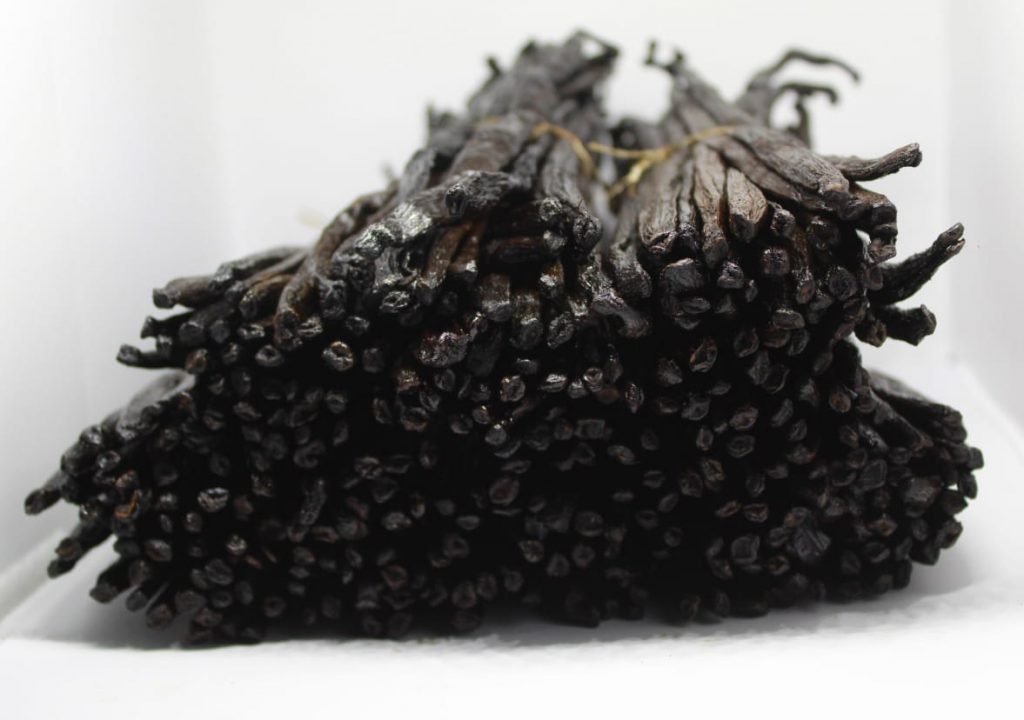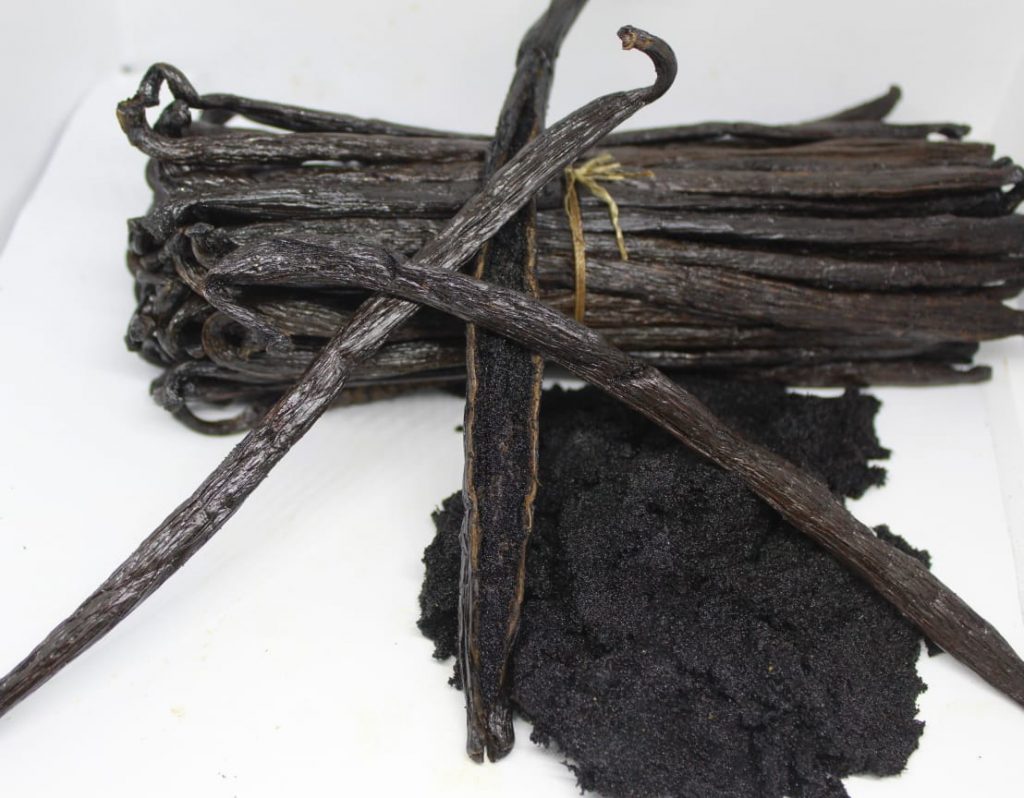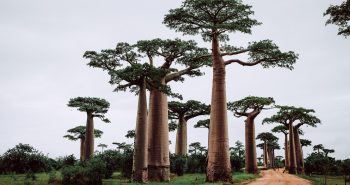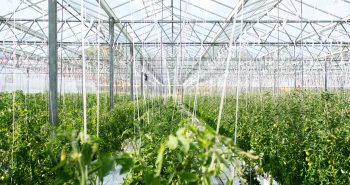This post is also available in: ![]() English
English ![]() Français (French)
Français (French)
Introduction
Vanilla is known to be one of the most prized and expensive spices in the world. The plant is a vine orchid native from the American tropical regions.
Vanilla was imported to Madagascar in the 19th century after having been imported to the island of Reunion by royal command of the French Sun King (Louis XIV) in 1650. The French colonists imported the precious plant also on the neighboring big island. However, the pollination process was mastered only in 1841 on the island of Reunion by the young Edmond Albius.
In 2021, Madagascar is still the first world producer of vanilla ahead of Mexico and Indonesia with 41% of the world production (about 7600 tons per year).

Since the pollinating insects are endemic to the American continent, pollination must be done artificially. After fertilization also called “marriage” (wedding in French) the formation of the fruit (pod) takes 9 months… This partly explains the high costs and the need for manpower to cultivate, monitor and harvest the precious pods especially in traditional culture.
In Madagascar, we mainly find the planifolia variety of vanilla commonly called bourbon vanilla. The gourmet quality (Grade A) is the top of the crop.
We will see in this article how vanilla is produced in a traditional way by some Malagasy producers by making a detour on the appellations in force today to qualify the quality of the pods.
Traditional vanilla production
We had seen in the article below a technique of production of vanilla (vanilla tahitensis) with growing tutors under greenhouses in Tahiti with a very effective system:
– Environmental conditions
There are also more traditional cultivation methods that recreate the tropical understory conditions found in the endemic regions where the plant was discovered. Indeed, it is native to lowland forests, where it thrives as an underwood lianas that climbs to the canopy.
The vines can withstand an extended dry season of up to three months. The plant needs a minimum of 3000 mm of rainfall, or can be irrigated on a small scale, and is rarely grown commercially above an altitude of 600 meters.
– Cultivation techniques
Vanilla is an easy plant to propagate. All it takes is one cutting from a mature plant, with 12 to 24 nodes or 1 to 1.5 meters long, to start a young vine of your own. The longer the cutting, the faster it will produce flowers.
When discussing crop density on a more commercial scale, vanilla is typically spaced on a 2.5m x 2.5m grid. This allows enough space to walk around each plant and quickly assess the flowering status. On a family farm scale, vanilla can be planted closer together. A spacing of 1.5 m along a row would be a minimum, as it is still important that you can move around each plant.
In “unprotected” or open-field cultivation, the alternation of wet and dry seasons will be crucial for the development of the plant as well as the shading to protect the plants. In reality, the rule of thumb of the professionals is 50% shade on the crops but it depends on the place where the vanillas are cultivated.
Vanilla vines growing on natural or artificial supports will need to be pruned once or twice a year. Pruning will help manage sunlight and shade during the rainy and dry seasons, provide mulch for the vanilla plants, and remove tall branches that the vanilla plants want to climb.
In geographic areas with a prolonged dry season, occasional irrigation during this period will greatly improve flowering. Shade, mulch and irrigation work together to allow vanilla to be grown in areas of the country that have a dry season. Irrigation can be provided with a drip system for greater informality and efficiency.
When it comes to fertilization, vanilla gets most of its nutrients from the mulch layer that surrounds the base of the bearing tree in farms using natural stakes. As an epiphytic organism, vanilla plants are able to absorb moisture from the air and find mineral salts, partly in the humus that may form at the base of the branches, and partly in the air absorbed or solubilized in water from rain and dews. Abundant mulching with leaves and woody branches and regular foliar spraying (biostimulants) is a good fertilization itinerary in traditional culture.
– Pollination
Pollination is a mandatory process that will become simple once mastered. The objective is to push together the anther (male part of the flower) and the stigma (female). Between these reproductive organs is a small flap, called the rostellum. Some growers do it with a pair of tweezers or even a toothpick that is stuck on the side of the flower. Recognition of the flowers to be pollinated and the timing are the challenges of the larger commercial plantings.
– Harvesting and drying processes
After 9 months, the fertilized vanilla planifolia flowers are ready to be harvested when the tips begin to yellow. After harvesting, processing begins to transform this odorless, tasteless pod into a shiny, oily, fragrant product of incredible value.
The drying and fermentation phases are then essential to improve the vanilla’s aromas and flavors by bringing the beans to the desired moisture levels.

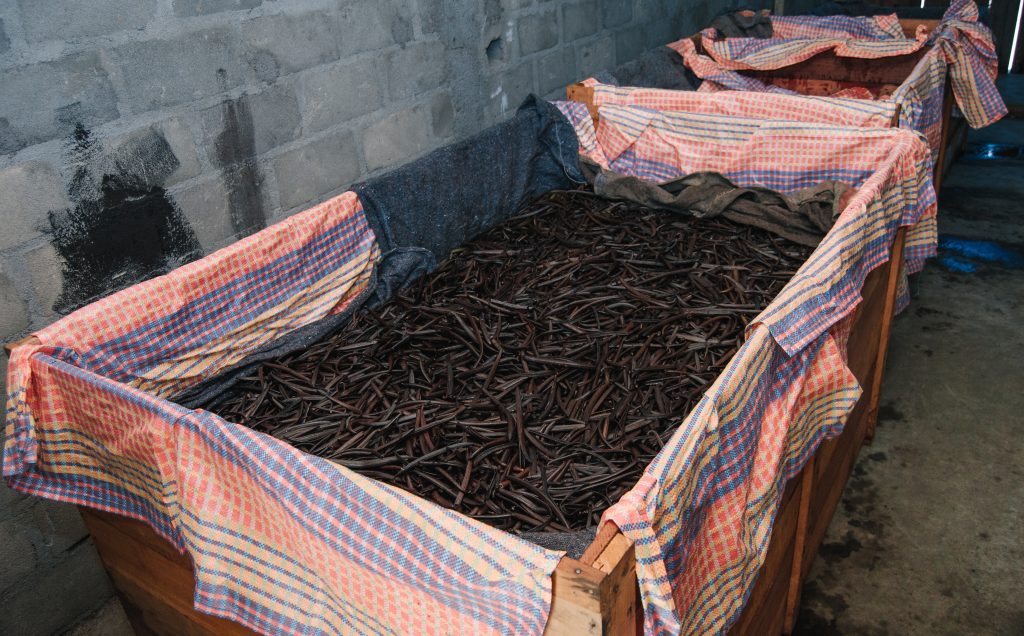
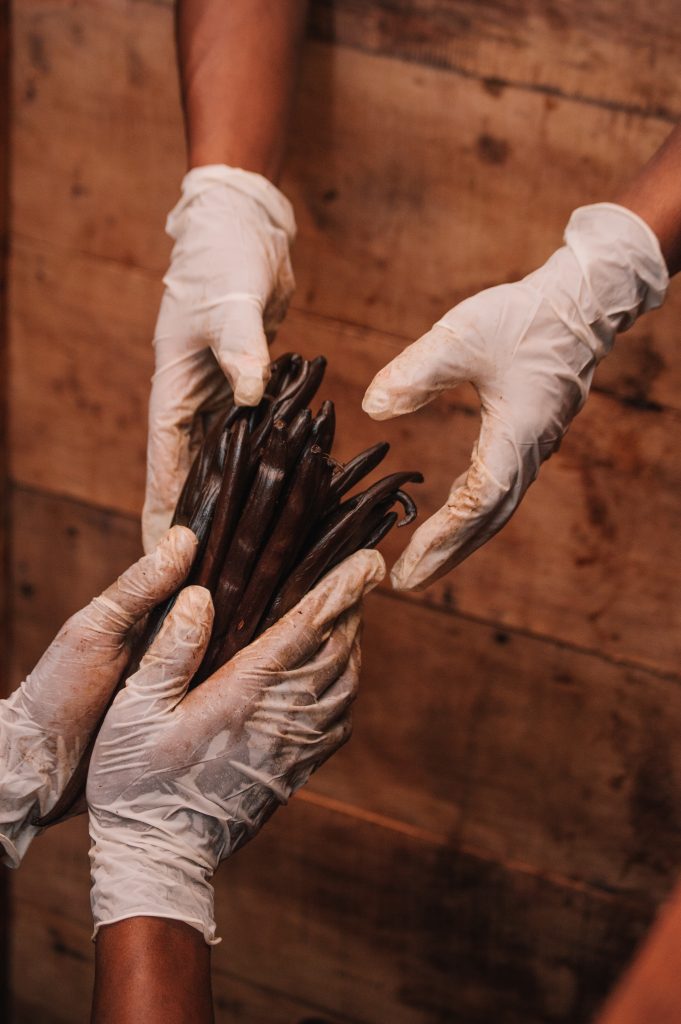
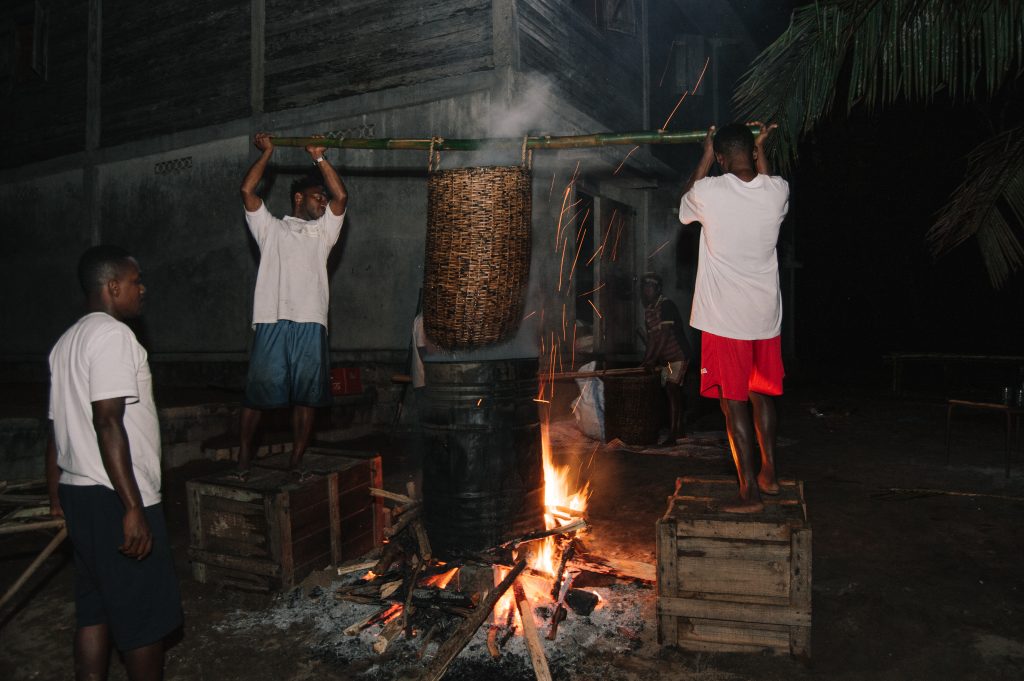
Overview of scalding practiced in Madagascar
One of the particularities of the Madagascar vanilla is the scalding, that is to say that the pods are put in a blanket inside a wooden box padded with several layers of wool blankets for a period of 24 and 72 hours. This step will allow the pods to soften and promote the development of aromas.

Once the pods have been exposed to the sun and have sweated until they are black (pictured above), fragrant and soft, it is time to dry them slowly in a shaded indoor area on a rack for about three months. They should be watched closely to remove any signs of mold.
There are different techniques to optimize the extraction of flavors as mentioned in the article below:
Grade A gourmet bourbon vanilla
Once processed, the vanilla beans are sorted by quality and class (or grade). Generally speaking, higher grade vanillas are more expensive on the market. The visual aspect and the state of humidity are two preponderant factors in the attribution of the grade.
Summary of criteria for defining grades:
| Grade A | 15 cm and longer 100–120 fruits per pound | Also called “Gourmet” 30–35% moisture content. |
| Grade B | 10–15 cm long bean 140–160 fruits per pound | Also called “Extract fruits”. 15–25% moisture content. |
| Grade C | 10 cm long |
In conclusion, the black vanilla of Gourmet quality can be qualified of very top-of-the-range a rate of moisture higher than 33%, it is a flexible and fatty vanilla.
Sources:
Origine de la vanille: https://blog.lecomptoirdetoamasina.fr/origine-de-la-vanille/
La filière vanille à Madagascar : http://biblio.univ-antananarivo.mg/pdfs/raharimanganindrianavt_eco_m1_07.pdf
Vanilla cultivation a practical guide for the tropical homestrad: https://www.permaculturenews.org/2019/02/23/vanilla-cultivation-a-practical-guide-for-the-tropical-homestead/
